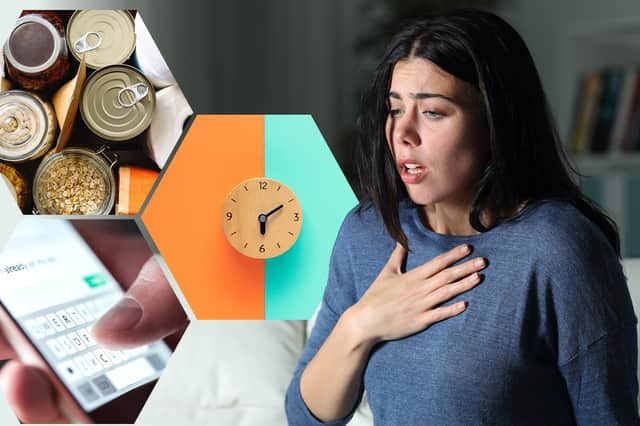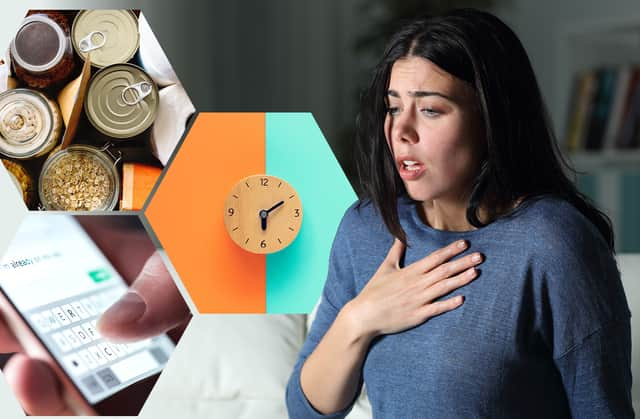Anxiety math: TikTok trend and impact on mental health explained, plus five expert tips on how to deal with it


You've heard of 'girl math' and 'boy math', but now there's a new TikTok trend called 'anxiety math'.
If you search 'anxiety math' or 'anxious math' on TikTok, you'll see hundreds of videos about this topic - and it's sure to be one that most people can relate to. The trend is basically about the logic people use to combat their daily worries and anxieties. Examples are wide and varied, and arguably range from being relatively harmless to being more problematic. They include buying extras of an item for fear of running out, arriving extremely early to avoid being late, or imagining the worst case scenario if someone doesn’t text you back after 10 minutes.
Advertisement
Hide AdAdvertisement
Hide AdWe are all likely to apply this trend in some way to our own lives and, while it isn't intended to be compared to serious anxiety-related disorders such as obsessive compulsive disorder (OCD), experts are concerned about it because it can impact mental health. So, what exactly is anxiety math, why are professionals worried about it, and how can you deal with it if you use it? Here's everything you need to know.
For anyone who is finding that anxiety is affecting their daily life and causing distress, the NHS recommends speaking to your GP about your thoughts and actions.
What is anxiety math?
Anxiety math is an anxiety disorder that causes people to overthink; catastrophise; fixate on minor details; overthink; overanalyse; and be hyper vigilant – all of which lead to cycles of stress and worry, says psychotherapist and anxiety expert Kamalyn Kaur. The compulsive and repetitive behaviours the person does such as checking, double checking; taking pictures; writing things down and so on, are all coping behaviours that a person does to help them reduce the anxiety of everyday occurrences.


What do experts think about anxiety math?
Anxiety math comes from a fear-based thought process, which many will deal with by developing coping strategies such as checking; taking pictures; writing things down; double checking; or being hyper vigilant.
Advertisement
Hide AdAdvertisement
Hide AdWhilst these behaviours might give you comfort in the short term, in the long term they keep the anxiety going, says Kaur, so this means that they are ultimately unhelpful. Instead, she advises you should challenge your fear based thoughts by asking yourself 'what is the likelihood of this worst case scenario that I am imagining, actually happening?' Doing this type of rational risk assessment can be helpful in reducing anxiety, she thinks.
Women’s counsellor Georgina Sturmer also believes the trend could be unhelpful for people who are already prone to worrying or may have irriational fears, but it may actually also be helpful.
She told The Metro: ‘When we’re looking at anxiety math we are considering the behaviours that we undertake, or the things that we tell ourselves, in order to help us to understand and cope with our worries. This idea allows us to take these coping strategies a step further. It encourages us to quantify exactly at what point we “should” be feeling as if our worries and fears have been realised. It offers us a number, a time, a measurement, to fixate on.
‘To me, it feels as if this could be helpful and unhelpful in equal measure. For some people, it might offer a sense of clarity, to know when they “should” be feeling worried. But on the other hand, it might encourage us to add a level of detail to worries that are, at their heart, irrational. And when we nurture our irrational fears, there’s sometimes a risk that we will develop them further and allow them to spiral."
Advertisement
Hide AdAdvertisement
Hide AdShe added that the key to coping with our everyday anxieties is to distinguish between rational and irrational fears and worries. "It’s really important to be able to distinguish between fears and worries that are a rational part of the risks that we take in everyday life, and the fears and worries that are irrational. This are often built on deeper fears about how we feel about ourselves. Once we have identified whether our anxiety is built on rational or irrational thinking, it can help us to nip fears in the bud, and to consider what kind of coping strategies we might need, in order to stay calm and self-assured."
Examples of everyday anxieties may people experience are microstresses, such as feeling overwhelmed by workload, getting text or email notifications and being low or petrol or charge for your car.
What other examples of anxiety math have people shared on TikTok?
There are many people discussing the examples of anxiety math that they use in their own life on TikTok videos. Examples include:
- Needing to be 10 minutes early for everything or you're late.
- If you only have one of something then you actually have none and you need to buy more.
- You always need to have at least two back-up or spare items in your cupboard.
- If there's a 10% chance of something bad happening, it's 100% going to happen to you.
- If one bad thing happens in the morning then your whole day is ruined and can't be salvaged.
- If you have to be somewhere for a set time, you need to at least double the expected journey time to make sure you get there on time.
- If someone doesn't reply to your text in a time frame you set then they're mad at you.
- If you don't have a photo of your straightners unplugged then they are still on.
How do I deal with anxiety math?
Anxiety disorders involve complex emotions and thoughts which take time to work through. However, Kaur has spoken to NationalWorld to offer five helpful tips that can help to get you started on dealing with them. They are as follows:
- Be mindful when engaging in daily activities. Focus on the task at hand; stay present whilst doing it; and concentrate on one thing at a time so that you have a conscious memory of what you are doing. This will help your mind to focus, relax, and reduce anxiety.
- Meditation and deep breathing are great ways to reduce the adrenaline and cortisol levels in the body that could be exacerbating the anxiety and resulting in “anxiety math”.
- Rationalise your thoughts. Every time you have a negative or anxious thought train your brain to look for evidence and facts so that you are reacting from a place of calm and control, rather than being driven by fear and anxiety.
- Identify and recognise your triggers. What triggers your anxiety and when? Start being aware of certain patterns as it will help you to feel more in control and prepared instead of anxious and overwhelmed.
- Delay the compulsive and repetitive response as much as you possibly can so that you don’t become reactive and dependent on it. For example if your compulsion is checking, delay the checking behaviour and gradually extend the delay as time goes on.
Comment Guidelines
National World encourages reader discussion on our stories. User feedback, insights and back-and-forth exchanges add a rich layer of context to reporting. Please review our Community Guidelines before commenting.
